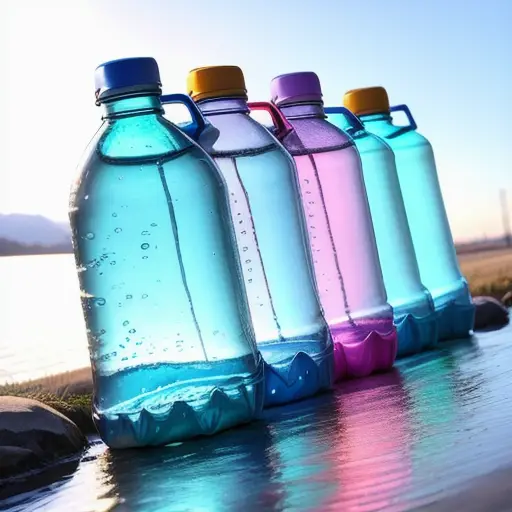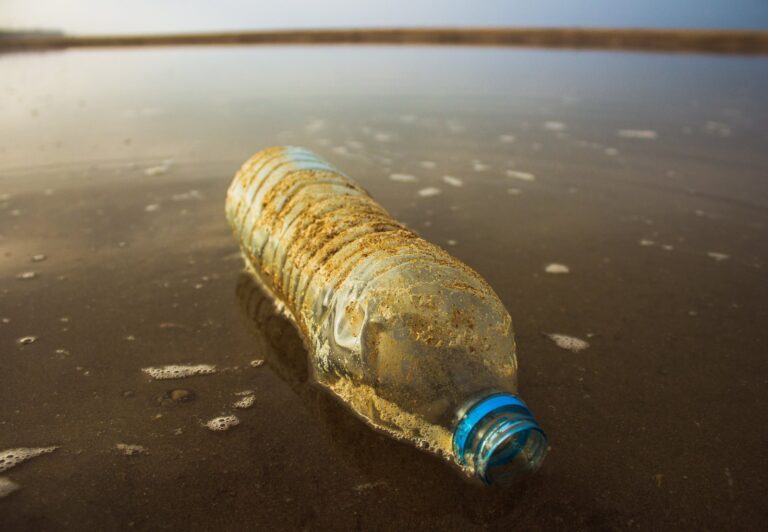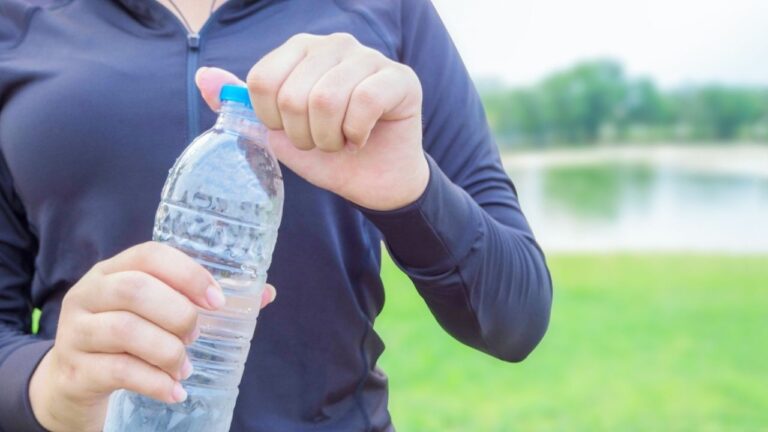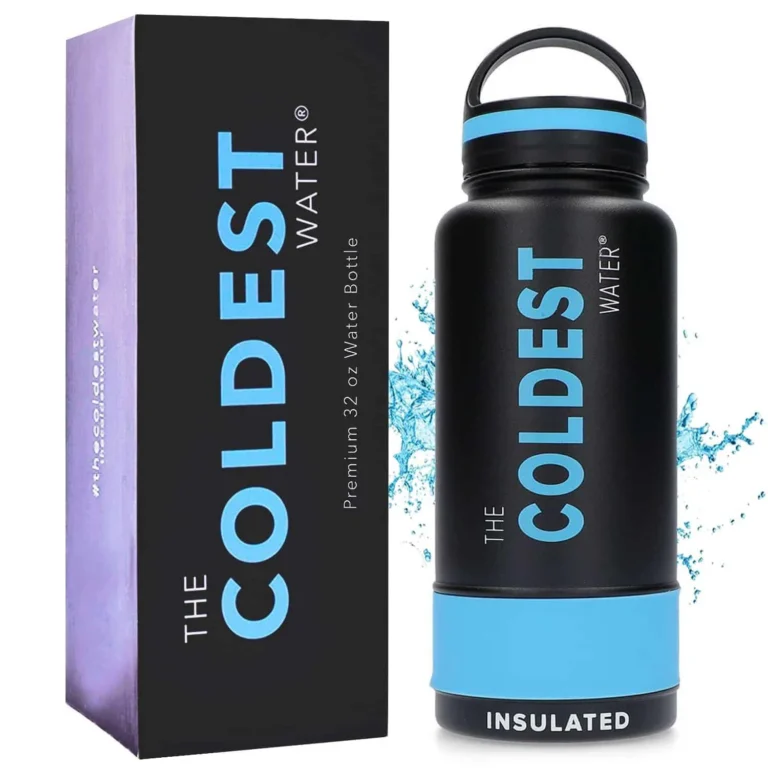Have you ever wondered how many water bottles you need to consume to complete a gallon of water? Keeping yourself hydrated is crucial, especially during hot summer days, and managing the quantity of your water intake sometimes becomes a bit confusing. While there are many suggestions available on the internet, it’s always better to possess a clear understanding of how many bottles it takes to complete a gallon. In this post, I’ll clarify the mystery and guide you through the answer to the question, “how many water bottles are in a gallon?
Common water bottle sizes
When it comes to staying properly hydrated, it’s important to know the different water bottle sizes available. Common water bottle sizes vary, from small 8-ounce bottles to larger jugs that can hold up to a half-gallon or even a full gallon of water. Understanding these different sizes can help you determine how many bottles of water make up a gallon.
The most common water bottle size is 16.9 fluid ounces, which equals half a liter. This size is often found in standard drinking water bottles and takes approximately 7 and a half bottles to make up one full gallon. If you’re using larger jugs, such as the half-gallon (64 fluid ounce) containers commonly found in grocery stores, it would only take two of those to make up one full gallon.
On the other hand, if you prefer smaller bottles, such as 8 fluid ounces or 12 fluid ounces, it would take between 16 and 12 bottles, respectively, to make up one full gallon. It’s important to note that the size and shape of the container used for measuring the gallon of water will not affect the amount held inside.
Knowing how many bottles of water make up a gallon can also be useful for budgeting your water consumption and reducing plastic waste. By understanding the different bottle sizes and their equivalents, you can better plan how much water you need and make more conscious choices about your plastic consumption.
In conclusion, the number of water bottles needed to make up a gallon depends on the size of the bottle. A standard 16.9 fluid ounce bottle takes approximately 7 and a half bottles to make up one full gallon, while larger jugs take fewer bottles and smaller bottles require more. Stay hydrated and be mindful of your plastic consumption by understanding the different water bottle sizes available.
What is a gallon?
A. Definition of a gallon
A gallon is a unit of liquid measurement that is widely used in the United States. It is defined as 128 ounces or 4 quarts. This means that one gallon of water can fill up a total of 16 standard 8-ounce water bottles or four 1-quart containers. The exact size or shape of the container used to measure the gallon of water does not affect the amount of liquid held inside.
Why is it important to know the definition of a gallon? Well, measuring out exact amounts of water is crucial for your daily hydration needs. Consuming one gallon of water each day can provide you with a healthy amount of hydration and ensure that you stay properly hydrated throughout the day. Drinking enough water not only helps keep your body functioning optimally but also helps flush out toxins and keeps your digestive system running smoothly.
Knowing how many bottles of water are in a gallon is helpful when planning your water consumption. For instance, if you prefer using standard 16.9 fluid ounce (500ml) bottles, you would need 7.5 of these bottles to make up one gallon. However, if you have larger half-gallon (64 fluid ounce) jugs, only two of those would be needed for a full gallon. It’s important to consider the size and liquid volume of the bottle you are using when determining the number of bottles needed to make up a gallon of water.
Understanding the definition of a gallon and its relation to water bottle sizes can help you stay hydrated and make informed choices about your water consumption. So, grab your favorite water bottle, fill it up and remember to drink enough water each day to keep your body functioning at its best.
B. Origin of the word gallon
The word “gallon” has an interesting origin that can be traced back to ancient times. The term is believed to have originated from “gaeliun,” an Old Irish word meaning “little.” This is thought to be the root of the word “gallon” used in different languages, including English. The idea behind the term is that a gallon is a unit of measurement that represents a small portion of a larger whole.
The concept of a gallon as a unit of measurement dates back to the medieval period in Europe, where it was used to measure wine and other liquids. The size of a gallon varied depending on the region, but it generally represented a standard amount of liquid.
Over time, the definition of a gallon evolved, particularly in England. In the 18th century, the British government established the imperial gallon, which is still in use today. The imperial gallon is defined as the volume of 10 pounds of distilled water under specific conditions.
Today, the term “gallon” is used worldwide, albeit with different measurements. The US and UK have different gallon measurements, and other countries may have their own variations. However, the concept of a gallon as a unit of liquid measurement remains universal.
III. How many fluid ounces are in a gallon?
A. Conversion from gallons to fluid ounces
Converting gallons to fluid ounces can be a simple and useful skill to have. One way to make this conversion is by using the conversion ratio of 128 fluid ounces per gallon. This means that if you have a certain volume in gallons, you can multiply it by 128 to find the equivalent volume in fluid ounces.
For example, if you have 5 gallons of water, you can calculate the corresponding volume in fluid ounces by multiplying 5 by 128. The result is 640 fluid ounces. This conversion is based on the fact that there are 128 fluid ounces in one gallon.
Understanding this conversion can come in handy in various situations, such as when you need to measure the correct amount of liquid for a recipe or track your daily water intake. By knowing how many fluid ounces are in a gallon, you can ensure that you are accurately measuring the right amount of liquids.
Remember, a gallon is equal to 128 fluid ounces, and this conversion ratio can serve as a useful tool in your daily life. Keep this information in mind to make your measurements and calculations more precise and accurate.
B. Examples of common items that contain a gallon of liquid
Many common household items contain a gallon of liquid. For example, a gallon of milk is a standard measurement at the grocery store. It typically comes in a plastic jug with a handle for easy pouring. Another household item that holds a gallon is a pitcher. Pitchers are often used for serving beverages like lemonade or iced tea at family gatherings or parties. Additionally, many cleaning products come in gallon-sized containers. This includes products like laundry detergent, floor cleaner, and even car wash soap. These larger sizes often provide more value for the consumer, as they can last longer than smaller bottles. It’s important to note that while these items hold a gallon of liquid, they may not be specifically designed for drinking water. Therefore, it’s essential to use containers that are safe for storing drinking water to ensure proper hydration and reduce plastic waste.
How many water bottles make up a gallon?
A. Calculation for common water bottle sizes (16 oz, 20 oz, 24 oz)
When it comes to understanding how many water bottles make up a gallon, it’s important to consider the different sizes of water bottles available. Let’s take a look at some common water bottle sizes, such as 16 oz, 20 oz, and 24 oz.
For a 16 oz water bottle, we can calculate how many of them are in a gallon by dividing the number of ounces in a gallon (128 oz) by 16 oz. This gives us a result of 8 water bottles in a gallon.
Similarly, for a 20 oz water bottle, the calculation would be 128 oz divided by 20 oz, which equals 6.4. So, there are approximately 6 water bottles of this size in a gallon.
Lastly, for a 24 oz water bottle, dividing 128 oz by 24 oz gives us a result of 5.33 water bottles in a gallon.
These calculations help us understand the quantity of water bottles needed to make up a gallon. It’s useful information if you want to ensure you’re consuming a gallon of water each day or if you’re budgeting for your water consumption. Remember, proper hydration is essential for maintaining good health and well-being.
B. Comparison to other common household containers (milk jug, pitcher)
When it comes to comparing water bottle sizes, it can be helpful to look at other common household containers for reference. The most common ones are milk jugs and pitchers. Milk jugs are typically half-gallon or gallon in size, and they provide a good visual representation of the amount of water in these larger bottles. Pitchers, on the other hand, come in various sizes, ranging from 32 ounces to 64 ounces or more, and are often used for serving liquids. Comparing water bottles to these containers can give you a better idea of the amount of water you’ll be consuming. For example, a 16-ounce water bottle is equivalent to half a quart or a quarter of a pitcher. A 24-ounce bottle is about three-quarters of a quart or a little more than a third of a pitcher. By understanding the comparison to these familiar household containers, you can easily track your water intake and stay hydrated throughout the day.
Importance of knowing how many water bottles are in a gallon
A. Reduce plastic waste
Reducing plastic waste has become increasingly important in our efforts to protect the environment. One way to make a significant impact is by being conscious of the number of plastic water bottles we consume. By understanding how many water bottles are in a gallon, we can make informed choices and opt for sustainable alternatives. For instance, by investing in a reusable water bottle, we can significantly reduce our plastic waste. Additionally, using other common household containers like milk jugs or pitchers can also help us minimize our reliance on single-use plastic bottles. By making small changes in our daily routines, such as bringing our own water bottles and refusing single-use plastic bottles, we can actively contribute to reducing plastic waste and protecting our planet. It’s important to remember that every action counts, and together, we can make a difference. So let’s stay hydrated while being mindful of our plastic consumption and make a positive impact on the environment.
B. Budgeting for water consumption
Budgeting for water consumption is an important aspect of maintaining a healthy and sustainable lifestyle. Drinking enough water is crucial for our overall well-being, but it’s also essential to consider the financial aspect. By understanding how many water bottles are in a gallon, we can effectively plan our water consumption and budget accordingly.
For example, if we know that there are eight 16.9-ounce water bottles in a gallon, we can calculate how many bottles we would need to consume in a day or week. This knowledge helps us determine the quantity of water we should purchase and allows us to plan our expenses accordingly.
Budgeting for water consumption also ties into the larger issue of reducing plastic waste. By being aware of how many bottles we consume, we can make more sustainable choices by opting for reusable water bottles or larger containers, such as milk jugs or pitchers. This not only helps us save money but also contributes to a greener environment.
Understanding the importance of budgeting for water consumption empowers us to make informed decisions that take both our health and finances into consideration. So, let’s stay hydrated and conscious of our plastic consumption while keeping our wallets happy.
C. Understanding hydration needs
Proper hydration is crucial for maintaining good health and well-being. Understanding your hydration needs is essential for ensuring that you drink enough water to keep your body functioning optimally. Our bodies are made up of about 60% water, and we lose water through sweating, urination, and even breathing. This water needs to be replenished to maintain the body’s balance.
The amount of water you need to drink each day depends on various factors, including your age, weight, activity level, and climate. On average, it is recommended to drink about eight cups, or 64 ounces, of water per day. However, some individuals may need more or less depending on their specific needs.
It is important to listen to your body’s signals of thirst and drink water whenever you feel parched. Dehydration can lead to various health problems, such as fatigue, headaches, dizziness, and kidney issues. Staying hydrated can also help with digestion, circulation, and overall cognitive function.
To ensure that you meet your hydration needs, carry a water bottle with you throughout the day and take sips regularly. Don’t rely on thirst alone as an indicator of your hydration status, as you may not always feel thirsty when your body needs water. Remember that water is the best choice for hydration, but other beverages, such as herbal tea or infused water, can also contribute to your daily intake. Stay hydrated and take care of your body.
Importance of proper hydration
Proper hydration is vital for maintaining good health and overall well-being. Our bodies are made up of about 60% water, and water plays a crucial role in keeping our body systems functioning optimally. Water helps regulate body temperature, carries essential nutrients and oxygen to our cells, and protects our vital organs and tissues.
Moreover, staying hydrated can help curb hunger cravings and prevent overeating. Sometimes, our body may confuse thirst signals with hunger signals, leading us to consume unnecessary calories. By drinking enough water throughout the day, we can keep our appetite in check and support a healthy weight.
Another benefit of proper hydration is its impact on our energy levels. When we are dehydrated, we can experience fatigue and low energy, affecting our productivity and overall performance. By drinking a gallon of water per day, we can boost our energy levels and feel more alert and focused.
Proper hydration is also essential for maintaining healthy skin. Dehydration can lead to dry, flaky skin, while adequate water intake helps moisturize the skin from within, giving it a radiant and healthy appearance.
Encouragement to stay hydrated and aware of plastic consumption.
Staying hydrated is not only good for our health, but it also helps us be more mindful of our plastic consumption. By prioritizing our water intake and choosing reusable water bottles, we can reduce our reliance on single-use plastic bottles that harm the environment. By making a conscious effort to stay hydrated, we can make a positive impact on both our own well-being and the planet.
Remember, drinking enough water is essential for our bodies to function properly. Water helps with digestion, nutrient absorption, and toxin elimination. It keeps our muscles and joints healthy and supports our overall health. By staying hydrated, we can feel more energized, focused, and ready to take on the day.
Additionally, by reducing our plastic waste, we contribute to the preservation of the environment. Plastic bottles are a major contributor to pollution and harm to marine life. By using reusable water bottles, such as stainless steel options like Iron Flask, we can significantly reduce the amount of plastic waste we produce.
So let’s make a commitment to stay hydrated and choose reusable water bottles. It’s a small change that can have a big impact on our health and the environment. Together, we can make a difference and create a healthier, more sustainable future.
Conclusion
Proper hydration is incredibly important for our overall health and well-being. To determine how many water bottles equal a gallon, it’s essential to understand the basic measurements. A gallon of water contains 128 fluid ounces, and the most common water bottle size is 16.9 fluid ounces. This means that you would need approximately 7.57 water bottles to make up a gallon. It’s interesting to note that the number of bottles will vary depending on the size of the bottle. For example, a 24 oz bottle would reduce the number of bottles needed to 84. It’s also worth considering other common household containers, such as a milk jug or pitcher, as they are often used to hold a gallon of liquid as well. It’s important to be conscious of plastic waste and the impact it has on our environment. By understanding the number of water bottles in a gallon, we can make more informed choices about our hydration habits and work towards reducing plastic consumption. So, stay hydrated and choose sustainable options whenever possible.




